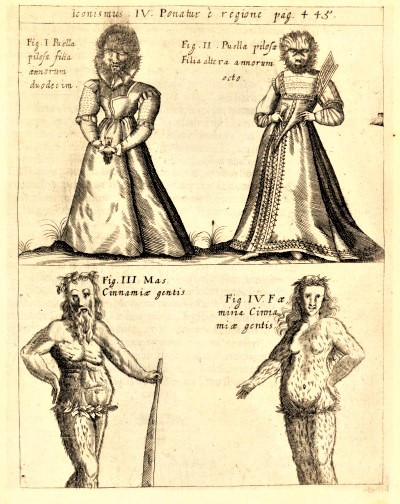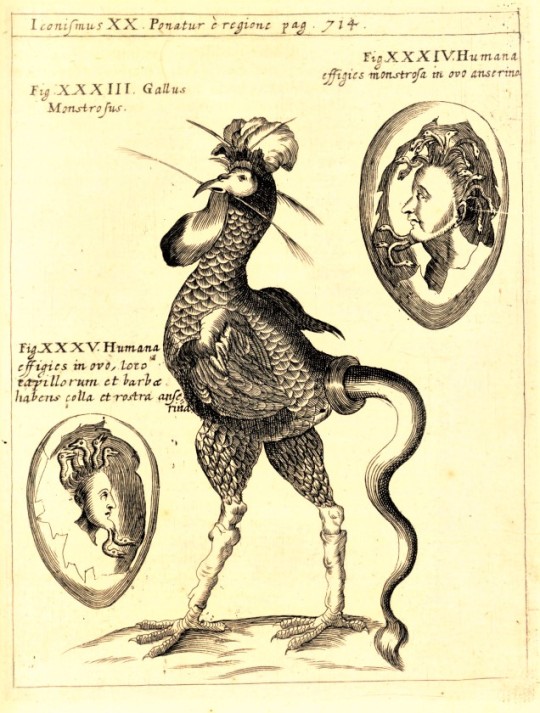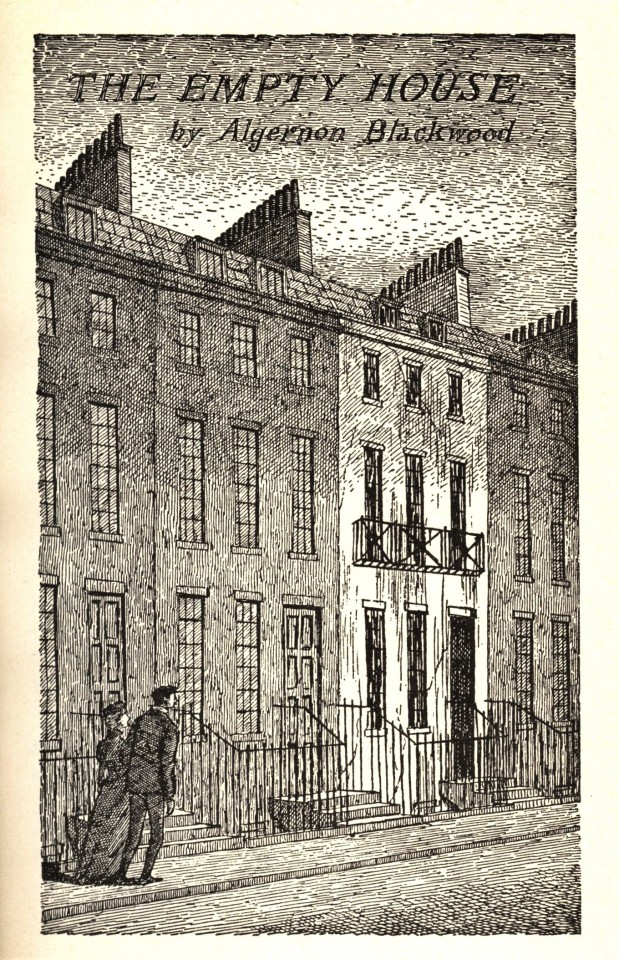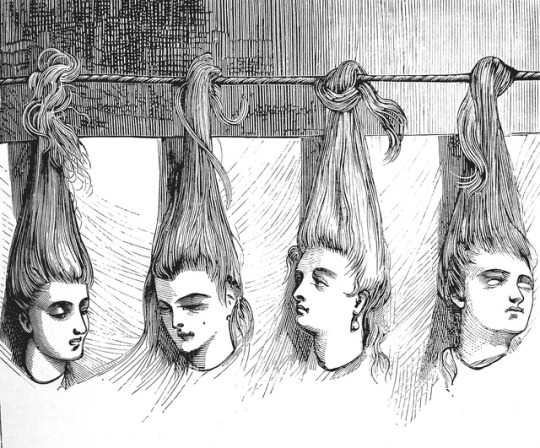#pagefrights
Video
n252_w1150 by Biodiversity Heritage Library
Via Flickr:
Curtis's botanical magazine.. London ;New York [etc.] :Academic Press [etc.]. biodiversitylibrary.org/page/471202
#Botany#Periodicals#Pictorial works#Missouri Botanical Garden#Peter H. Raven Library#bhl:page=471202#dc:identifier=http://biodiversitylibrary.org/page/471202#artist:viaf=34803935#artist:name=Sydenham Teast Edwards#PageFrights#halloween#BHLCurtis#taxonomy:family= Droseraceae#geo:locality=North America#plant#carnivorous#flytrap#flowering#flickr#dionaea muscipula#Venus flytrap#scientific illustration#scientific drawing#botanical illustration#botanical drawing
1 note
·
View note
Photo










Science Saturday / Halloween Crossover
Halloween falls on a Saturday this year, and what better way to celebrate than to look at a “scientific” work about monsters, Gaspar Schott’s Physica Curiosa!
Gaspar Schott was 17th-century German Jesuit scientist whose compilations, “experiments,” and deep interest in magic occasionally led to some pretty dodgy publications of his own – much to the delight of his 21st-century readers! Such is the case with his Physica Curiosa (almost-full title below), published in Würzburg (Herbipolis) in 1662.
This two-volume set explores the physical curiosities of the known and unknown worlds, mixing (as the extended title suggests) observed fauna, flora, and astronomical phenomena with fabulous beasts, monsters, angels, demons, specters, and portents.
P. Gasparis Schotti ... Physica curiosa, sive Mirabilia naturæ et artis libris XII. comprehensa; quibus pleraque, quæ de angelis, dæmonibus, hominibus, spectris, energumensis, monstris, portentis, animalibus, meteoris, &c. rara, arcana, curiosaq́ue circumferuntur, ad veritatis trutinam expenduntur, variis ex historia ac philosophia petitis disquisitionibus excutiuntur, & innumeris exemplis illustrantur ...
You can browse a digital copy of Physica Curiosa online through the Internet Archive! Which seems like a great Halloween activity. There is also a full moon tonight! SPOOKY!
HAPPY HALLOWEEN!
View our other posts about Physica Curiosa.
View other Halloweeny-like posts.
View more Science Saturday posts.
-- Sarah, Special Collections Graduate Intern
#Science Saturday#Gaspar Schott#Physica Curiosa#scientific illustration#monsters#engravings#copperplate#etchings#science#naturalist#natural history#natural philosophy#17th century#early science#history of science#Halloween#holidays#spooky#pagefrights#Sarah#Sarah Finn
263 notes
·
View notes
Photo

From our stacks: Illustration “Saw a corpse...in his winding sheet” from Scottish Fairy and Folk Tales. Selected and Edited, with an Introduction, By Sir George Douglas, Bart. Twelve Illustrations by James Torrance. London: Walter Scott, Ltd., c1901?
#corpse#james torrance#scottish fairy and folk tales#illustration#books#book illustration#old books#corpses#mummy#page frights#pagefrights#apparition#ghost#ghosts#detroit public library
28 notes
·
View notes
Photo



sinister spell books or early 20th-century yearbook covers? you decide! Happy Halloween from the Special Collections & Archives wolf pack at Loyola University New Orleans!
#Halloween#bookcovers#yearbooks#werewolves#wolfpack#loyola university new orleans#Special Collections & Archives#pagefrights
26 notes
·
View notes
Photo

This little animation for Bat Week is from Imao Keinen's Keinen shūgajō v. 4 published 1906 in Kyoto. While a lot of his work is more elaborate than this set, you can find some exceptional sumi-e or black ink painting (with the occasional pop of color) inside the 7 volumes we’ve digitized.
Explore our collection of Japanese Illustrated Books from the Edo and Meiji Periods for more great finds.
749 notes
·
View notes
Photo

Everyone does their part for the #skeletonwar!⠀ ⠀ QM21 .C5 1741⠀ ⠀ #skeletons #spooky #spookyskeletons #halloween #morbid #anatomy #pagefrights #bookguts #bibliophile #rarebooks #specialcollections #librariesofinstagram #iglibraries #mizzou #universityofmissouri #ellislibrary #ifttt
#bookhistory#special collections#rare books#mizzou#libraries#books#history#instagram#skeletons#spooky#spookyskeletons#halloween#morbid#anatomy#pagefrights#bookguts#bibliophile#rarebooks#specialcollections#librariesofinstagram#iglibraries#universityofmissouri#ellislibrary
425 notes
·
View notes
Photo

Kui Xing, stellar patron of the literati, is associated with the constellations and a servant to Wenchang, the God of Literature. The name Kui Xing, or Star Ghost, also refers to stars in the Big Dipper constellation. He is often depicted standing on one leg, clutching a brush in one hand and a tablet in the other, as well as standing on the head of a turtle waving a Chinese brush in the air.
Portrait of Kuixing stellar
Alternate Title :Kui xing xiang bing zan
Transliterated (Pinyin) Title :Kui xing xiang
Rubbing from a stele depicting Kui xing, a stellar deity, standing on one leg and clutching a brush in one hand. 1 big seal on the center top section of the stele. 2 inscriptions stating the painting is by Luo pu yu zhe (Qing artist), inscription and calligraphy by Long quan zhu ren and engraved by Liu.
Ink on paper. intaglio
106 x 50.5 cm
Citation/references: Chavannes, 1909, vol. X, no. 1178. ; Beijing tu shu guan cang hua xiang ta ben hui bian, 1993, v. 9, p. 137 (Kui xing xiang bing zan).
Rubbing recorded originally taken from stone engraving outside Longmen Caves, Loyang, Henan.
Historical: Stele date: Spring of 3rd. yr of Tongzhi, Qing Dynasty (1864).
#chinese art#asian rubbing#fineartslibrary#harvardfineartslibrary#Harvard#harvard library#ghost#pagefrights
243 notes
·
View notes
Photo


We found this beautifully embossed book cover in the stacks that, upon closer examination, has an adorable little bat.
The Book of Nature, 1851. By Friedrich Schoedler.
106 notes
·
View notes
Photo

“To give an accurate description of their shape is a thing impossible. Some of them appear with horns that they bend to every shape; some seem to have but one leg and a tail, others seem to have three; some have bodies somewhat of the shape of a tadpole; others bear a distant resemblance to the porpoise; others exhibit the shape of a catfish with the head of a grass-hopper; others resemble nothing under the sun, but are wholly sui generis.”
Magnified #PageFrights from The Book of Wonders (Boston, circa 1872).
The Book of wonders. : A strange, mysterious, and most wonderful publication. [Boston] : Published by F. Gleason & Co., 738 Washington Street, Boston, Mass., [not before 1872] 80 p. : ill. ; 24 cm.
#BensLibrary#PageFrights#LCPchallenge#Microscopes#BookofWonders#1870s#Science#RareBooks#SpecialCollections#Tumblarians
64 notes
·
View notes
Photo

Thomas Marshall in his stylish Halloween costume, 1925. Possibly the first and only non-terrifying clown.
From the Thomas C. Marshall photographs (Accession 1990.270), in Hagley’s Audiovisual Collections
#halloween#halloween costume#costume#thomas marshall#auburn heights#auburn heights preserve#clown#fashion friday#fashionfriday#pagefrights#page frights#1920s
42 notes
·
View notes
Photo

Opening the 1960 Chanticleer has always been a bit of a page fright....
(Browse the 1960 Chanticleer online!)
#pagefrights#yearbook#blue devils#bluedevil#duke university#dukeuniversityarchives#pointyfingernails#archives#dukeblue
29 notes
·
View notes
Photo




Macabre Monday
It’s no secret that Edward Gorey is a bit of a fan favorite here at UWM Special Collections. Therefore, it seems only fitting that we highlight the gor(e)y images from Haunted Looking Glass, a collection of spooky short stories he assembled and illustrated, for this week’s #Macabre Monday post. His chosen authors run the gamut of heavyweight horror, including Bram Stoker, Charles Dickens, Wilkie Collins, Edith Nesbit, and Algernon Blackwood, among others. It was published by Avenel Publishing in New York in 1984 and distributed by Crown Publishing. With twelve illustrations for the twelve different short stories, the pen-and-ink drawings were created with a level of intricately-detailed line work that express foreboding and sinister implications.
View more posts about Edward Gorey.
In the mood for more spooky imagery? See more here.
-- Emily, Special Collections Writing Intern
#Edward Gorey#bram stoker#charles dickens#Wilkie Collins#Edith Nesbit#algernon blackwood#avenel#crown publishing#Avendel Publishing#ghost stories#macabre monday#pagefrights#Emily Birz
264 notes
·
View notes
Photo

From our stacks: Illustration “Blue Beard.- “Four heads were hanging by their long hair from the wall.” from Queen Titania’s Book of Fairy Tales. New York: Frank Leslie’s Publishing House, 1883.
#blue beard#heads#illustration#book illustration#fairy tales#hair#pagefrights#vintage illustration#bluebeard#decapitation#decapitated head#decapitated heads#head#book#books#old book#old books#vintage children's books#vintage children's illustrations#old childrens book#old childrens books#old children's book#old children's books#detroit public library
3K notes
·
View notes
Photo

Any message against eating candy is a #pagefright in our book! May you not "abstaine from all sweete things" this Halloween season ; )
Detail from a letterpress printed page in The Golden Trade: or, A discovery of the river Gambia, and the golden trade of the Aethiopians (1603) by Richard Johnson, reprinted in 1904 on handmade paper.
10 notes
·
View notes
Photo

Happy Halloween!
-Gyōsai manga sho-hen by Kawanabe Kyōsai, late 19th century, UCSF Japanese Woodblock Print Collection.
23 notes
·
View notes
Photo




Halloween reading from the Rare Book Collection at Wilson Library. We have spooky mysteries, devilishly illustrated books, and even a dictionary for all things infernal!
Give me death (1934); Saducismus triumphatus (1689); Dictionnaire infernal (1844); The twin hells (1890)
27 notes
·
View notes